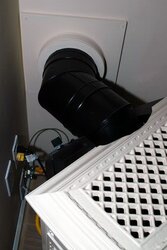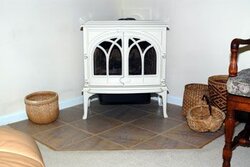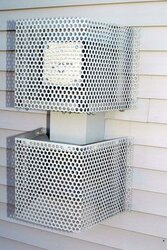Hello everyone and a happy holiday season to all. It has been over a month since my last posting so rather that pick up that thread I thought it best to start anew. My stove is vented through a west facing wall into a 14 inch snorkel and runs fine as long as the prevailing west wind isn't blowing. We have had two good storms within the last month which gave me an opportunity to experiment with damper settings etc. When the stove was running, at any setting and the wind gusted the flame would "ghost" (as DAKSY described it) so following his suggestion, I briefly removed the glass from the front and found that even with the flame at the highest setting a cold outside breeze could be felt over it which actually blew the flame exhaust out into my living room so…after quickly replacing the glass, I think I may have discovered the problem. Since we have a steady 7" of water gas pressure (that is about .25 or 1/4 PSI I think) that remains steady with all our gas appliances running, furnace, HW heater, clothes dryer, kitchen stove, and the Jotul, It seems like the gusting wind pressurizes the fire-box and prevents the gas from emerging from the burner so main flame and pilot-poof!-go out, starved not for air but for gas.
If I am correct there seems to be no solution except removing the pesky snorkel and venting the stove up and out the roof.
What think you? Ronny
If I am correct there seems to be no solution except removing the pesky snorkel and venting the stove up and out the roof.
What think you? Ronny




